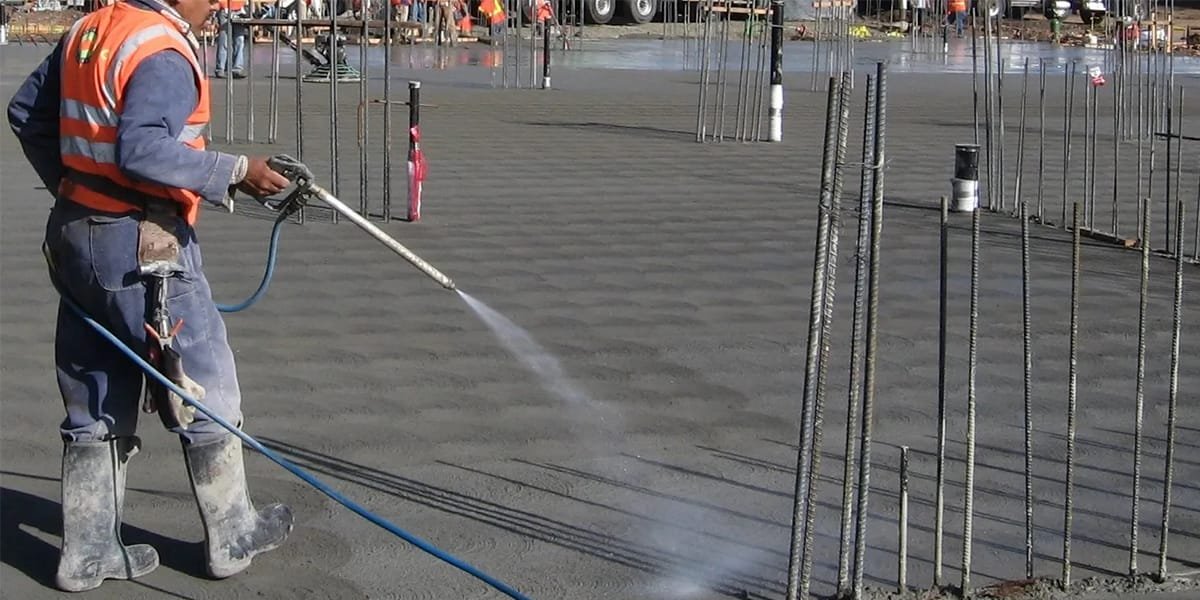
11 Mar What Is The Best Concrete Mix Ratio?
Correct concrete mix ratio is important for durable, strong, and workable concrete. But what is the best concrete mix ratio, and how can you achieve it? Continue reading this to get your answers!
The best concrete mix ratio is 1:2:3. 1 part of cement, 2 parts of sand, and 3 parts of aggregate. However, this ratio can change depending on the nature of the construction project.
Are you still confused about the right concrete mixture for your project? Continue reading this to clear up all your confusion and enhance your knowledge!
What Is a Concrete Mix Ratio?
The concrete mix ratio is about selecting the right ingredients and their specific amount to create effective concrete. The proportion is important for concrete workability, durability, and strength.
The ratio is expressed in numerical numbers. The standard concrete mix ratio is 1:2:3:
- 1 part of cement
- 2 parts of sand
- 3 parts of coarse aggregate.
The Role of Each Ingredient in Concrete Mix
Each ingredient plays a particular role in the concrete mix. It affects its quality and workability.
Cement
Cement acts as a glue to bind the mixture together. It also reacts with water during hydration. The chemical reaction hardens the mix and provides strength to the concrete.
Sand
Sand is the fine aggregate. It fills the gaps between large particles of the aggregate like gravel. It also provides density to the concrete mix.
Aggregate
Coarse aggregate consists of crushed stones and gravel. They provide most of the structure for concrete. Coarse aggregate also prevents the concrete mix from shrinking as it dries.
Water
Water creates the paste to bind the solid ingredients. Water activates the cement, making it hard and strong. Water also ensures proper curing to increase concrete’s durability.
Standard Concrete Mix Ratios
There are multiple types of concrete mixture ratio depending upon its use. Every type of construction project requires a specific concrete mix ratio. Let us look at a few types of concrete mix rations
General Purpose Concrete (1:2:3)
The concrete mix ingredients ratio in general-purpose concrete is:
- 1 part of cement
- 2 parts of sand
- 3 parts of coarse aggregate
This concrete mix ratio has a good amount of strength and durability. This mix is ideal for everyday use, like sidewalks, and patios.
High-Strength Concrete (1:1.5:3)
The concrete mix ingredients ratio in high-strength concrete is:
- 1 part of cement
- 1.5 parts of sand
- 3 parts of coarse aggregate
Higher content of cement in high strength concrete mix ratio increases the compressive strength of concrete. It is a load-bearing, strong, and durable concrete. It is used in construction projects such as high-rise buildings and industrial floors.
Lean Concrete (1:3:6)
The concrete mix ingredients ratio in lean concrete is:
- 1 part of cement
- 3 parts of sand
- 6 parts of coarse aggregate
This concrete type has lower cement content than the above two. Lean concrete is cost-effective, weak, and less durable. It is ideal for non-structural applications, such as sub-base and paving.
Mortar Mix (1:4)
The mortar mix does not contain gravel. It has 1 part of cement and 4 parts of sand. Mortar mix has a paste-like consistency and general masonry applications. For example, binding the bricks together.
Factors That Influence the Best Mix Ratio
Some factors must be considered before deciding concrete mix ratio. Let us look at them in detail.
Purpose
The purpose refers to the intended use of the concrete mix. What kind of project is under construction decides what concrete mix ratio you need. For example, a sub-base construction will need a lean concrete mix (1:3:6).
Strength Requirements
Strength refers to the compressive strength of a concrete must-have for a project. A high cement-to-water ratio increases it. A low ratio reduces it. For example, structural constructions require high-strength concrete(1:1.5:3)
Workability
Workability refers to how easy the concrete mix is to handle, use, and transfer. Usually,y sand improves workability but reduces strength. For example, mortar concrete has high workability as compared to other concrete mix ratios.
Tips for Achieving the Best Concrete Mix
Here are some tips you can use to achieve the best concrete mix
Measure Accurately
Measure the ingredients of the concrete mix carefully according to the specified proportion. Inaccurate measuring can affect the strength, durability, and workability of concrete. Inaccurate measuring can result in the concrete mix being either too runy or too brittle. For effective application, it is important to carefully measure the content. Use a weighing machine or a bucket to add ingredients to the concrete mix.
Gradually Add Water
Water plays a key role in the hydration of concrete. But, Some people overlook the gradual addition of water. It is vital to add water gradually while mixing non-stop. This will create the best concrete mix. Start by adding a little water. Then, slowly increase it to get the right consistency.
Mix Thoroughly
It is important to mix the contents of concrete mix thoroughly. If concrete is not mixed evenly, it can result in hard workability and abnormal curing time. Add all ingredients carefully and keep mixing to evenly distribute the ingredients.
Test the Consistency
It is important to test the consistency of concrete to check its workability. Slump test is used to test the consistency and workability of freshly prepared concrete. The test is done before using the concrete for the main project.
Common Mistakes to Avoid
Avoid these common mistakes to prepare an effective concrete mix.
Adding Too Much Water
Cement takes time to absorb water and turn into paste. So avoid adding too much water at once. Be patient and add a small amount of water while mixing the concrete. Too much water content will make the concrete runny and affect its workability and strength.
Skipping Measurement
Unless you are a professional with experience, do not skip measuring ingredients for concrete mix. First, learn which concrete mix is ideal for your project. Later, read the ratios carefully and measure them before mixing.
Overmixing or Undermixing
Avoid overmixing and undermixing. Take help from professionals for ideal mixing. Also, run a slump test to check the consistency.
How to Adjust the Ratio for Specialized Needs
It is possible to adjust ratios for specialized needs. Let us look at how to do the adjustment and when.
Increase Cement
Cement has a direct relationship with the strength and durability of concrete. High cements mean more strength. Less cement means less strength. You can adjust the cement ratio according to your needs. For example,e you can change the 1:2:3 ratio into 1:1.5:3 or 1:2:2 to increase cement contents.
Add Admixtures
Admixtures act as chemical compounds to change the properties of concrete. For example, superplasticizers improve workabilityAcelartors speed up the curing time. You can add these admixtures according to the project’s needs and demand.
Use Alternative Aggregates
Alternative aggregates can replace sand and gravel. They also enhance or modify concrete strength and durability. There are two types of alternative aggregates:
- Lightweight Aggregates: Consists of clay, perlite, and polystyrene beads.
- Recycled Aggregate: Consists of crushed glass and reusable concrete.
Conclusion
The best concrete mix ratio depends upon the nature of the project. The most popular concrete ratio is 1:2:3.There are other three types of mixing ratios depending upon the amount of each ingredient, strength, and workability.
To create an effective concrete mix, take care of measurements and water content. Take professional help when necessary.


